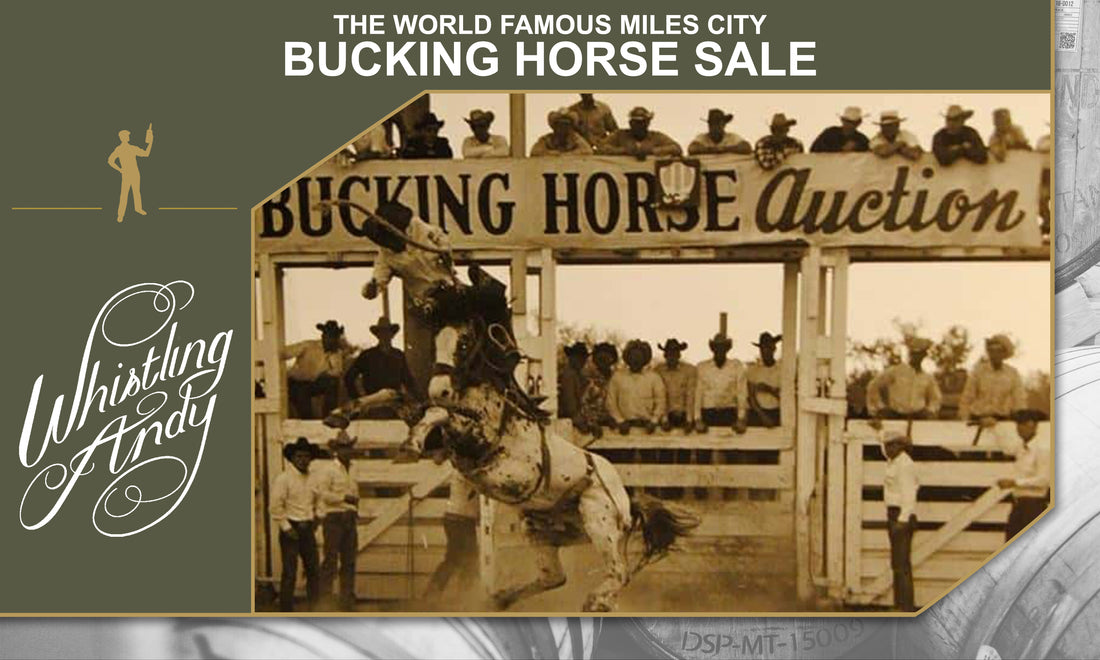The history of small-town rodeos in Montana dates back to the 1800s, and they are still a wonderful way to gain an understanding of the state’s rich Western heritage. With some of these events continuing to go strong for well over a century, they have become a bridge between the Big Sky State’s past and present.
One of these small-town rodeos with a history as big as the state itself is the Miles City Bucking Horse Sale and Rodeo. Located at the confluence of the Tongue River and the Yellowstone River, Miles City is surrounded by pristine plains and badlands and has a long history as a center of the livestock trade.

For those with rodeo in their blood, the Miles City Bucking Horse Sale is the can’t-miss event of the year. Visitors come from far and wide to take part in this fun-filled weekend celebrating the cultures that comprise both Montana’s Western and rodeo heritages.
Becoming the Horse Capital of the World
In order to understand the history surrounding the Miles City Bucking Horse Sale, one must first understand how Montana became the Horse Capital of the World.
In the 1800s, cattle ranches were common throughout the West. Many cities in Montana, including Miles City, came into existence and thrived thanks to the cattle industry.
Tragically, in 1886, one of the harshest winters on record decimated the Western United States. Across the West, ranchers lost hundreds of thousands of heads of cattle from starvation and cold in what became known as the Big Die-Up. While Mother Nature served up extreme conditions, it is now understood that the ranching industry itself had set itself up to be less able to navigate such disastrous weather events.

At the time, many considered the natural resources of the Western United States to be virtually limitless and many ranchers overstocked their ranges. The large size of these herds led to compacted soil, making it hard for vegetation to grow. Combined with overgrazing and an unusually hot and dry summer, the blizzards and vicious cold of that winter meant that grazing became impossible and, with many herds spread out over large areas, cattle simply were lost and either froze or starved to death.
Following that terrible winter, some ranchers decided that the expense and effort of securing feed for their cattle in winter was too much. Unlike cows, horses use their hooves to dig and uncover food below the frozen layer on the ground. Because of this, horses have a better chance of survival during harsh winters. This made horses the obvious choice for ranchers across the state of Montana, eventually making it the Horse Capital of the World for a time.
The History of the Miles City Bucking Horse Sale
There is a great backstory to how the Miles City Bucking Horse Sale came to be the world-famous Western rodeo wonder that it is today.
In 1950, Les Boe, a representative of the Miles City Livestock Commission, was sent to purchase a large amount of steer from a man known as Heavy Lester. In addition to the yearling steers, Lester threw in 35 heads of bucking horses.
The Commission was perplexed as to what to do with the horses, and after some consideration, they decided that holding a sale to offload the bucking horses was the answer.
It took three days to complete the sale, and from there, the Miles City Bucking Horse Sale was born. The following year, the Commission held another successful bucking horse sale. A few years later, in 1956, businesses started selling concessions to those who came for the sale, rodeo competitions were added, and the event began to grow organically into what it is today.
The Miles City Bucking Horse Sale Today
Over seven decades after it began, the Miles City Bucking Horse Sale is one of the premier sales and rodeo events in the country.
The event’s auction continues to provide rodeos the world over with some of the absolute best bucking horses from selectively bred stock available for purchase.

The annual rodeo is held over three days and includes a range of events from horse races to mutton busting.
Even if you aren’t a rancher or rodeo rider, there is something for everyone when it comes to the festivities that take place alongside the sale. Some of the excitement that you can take in other than just the sale and rodeo include:
- Parades featuring rodeo participants.
- Art events and exhibitions.
- Over 100 vendors.
- Nightly street dances.
- Big-name country music concerts.
- Daily Trade Shows.
- Food from BBQ and trucks from all over the country.
The History of the Miles City Bucking Horse Sale: A National Treasure
At a time when so many traditions have been lost in our modern society, the Miles City Bucking Horse Sale continues to hold its prominent place in Western culture.
While the event started almost by accident over seventy years ago, it continues to flourish and grow, bringing people from all walks of life to this small community to celebrate the traditions and legacy of the American West.
The Miles City Bucking Horse Sale continues to bring joy to the hearts of all who attend and is working to preserve the beautiful history of this one-of-a-kind event. The Miles City Bucking Horse Sale is and will continue to be a national treasure.





